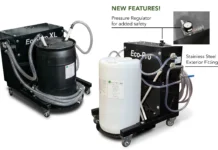The “2019 Deloitte and MAPI Smart Factory Study,” from Deloitte’s Research Center for Energy & Industrials Group, was the result of a joint study by Deloitte and the Manufacturer’s Alliance for Productivity and Innovation (MAPI) that examined the smart factory – the concept of connecting machines, people, data and value chains.
One aspect of the study focused on the steps that lead to the successful implementation of a smart factory initiative. Here are the top five steps that manufacturers can take to succeed in their quest to smarten up the workplace.
1. Define the Anticipated ROI
When planning to launch a smart factory initiative, decide on the expected and required tangible benefits of the initiative. Choose a concrete measure, such as increased production capacity, greater throughput, better product quality or more insight into equipment performance. Having very clear motivation and a way to track success are important parts of a connected-technology launch.
2. Create a Plan A and a Plan B
Companies that institute winning technology advances know that having one best-laid plan is often insufficient. When considering how to implement new connectivity technology, think through a Plan A and a Plan B. Stay true to the “must have” outcome for the project, but be flexible about how the outcome ultimately may be achieved. That flexibility might entail making a quick but not unanticipated course correction, or it might call for a combination of retrofitting an existing asset and enabling a new asset too.
3. Get Leadership Buy-In at the Start
Recruiting support from leadership early to lead the charge is important for lining up financial backing for the current project, as well as for creating a positive climate for more initiatives down the road. Early buy-in from management leaders also sets a positive tone that lines up the understanding and cooperation of the company’s entire workforce.
4. Start with Small, Short-term Initiatives
Rather than launching into a plan for a sweeping or complex technology advance, start out small with one or just a few concurrent short-term proof-of-concept plans. With each small success that meets its ROI objective, move on to implementing the initiative more broadly or rolling it out in more locations.
5. Parlay Each Success into the Next Logical Investment
Use the success of a well thought-out, wisely planned, backed-by-the-boss initiative to help make the case for the next step in the plan, the next phase of the project or the next, more ambitious initiative. Nothing succeeds like success.





